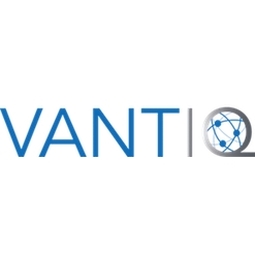Download PDF
Real-Time Dispatch System: A Mitsuiwa and Vantiq Collaboration

Technology Category
- Analytics & Modeling - Real Time Analytics
- Functional Applications - Computerized Maintenance Management Systems (CMMS)
Applicable Industries
- National Security & Defense
- Telecommunications
Applicable Functions
- Human Resources
- Maintenance
Use Cases
- Personnel Tracking & Monitoring
- Real-Time Location System (RTLS)
Services
- System Integration
The Challenge
Mitsuiwa, a company that handles over 1,000 customer requests monthly, was facing a significant challenge in dispatching Customer Engineers (CEs) to respond to incidents and computer breakdown requests. The traditional process involved an operator receiving a request, referring to the personnel’s skills and schedule, and then contacting multiple individuals by phone or email to find a match. This process took an average of 30 minutes per case. Moreover, the personnel were often unavailable to take calls while working at the customer’s location or on the move, leading to repeated contact attempts, increased frustration for CEs, and longer response times for customers. Compounding these issues was a national decrease in the working population, making it difficult to hire more operators and maintenance personnel to respond to issues quickly.
The Customer
Mitsuiwa
About The Customer
Mitsuiwa is a company that responds to more than 1,000 customer requests every month, including maintenance personnel, security guards, caregivers, and more. The company was facing challenges in dispatching Customer Engineers (CEs) to respond to incidents and computer breakdown requests due to the manual and time-consuming nature of the process. The situation was further complicated by a national decrease in the working population, making it difficult to hire more operators and maintenance personnel to respond to issues quickly. Mitsuiwa needed a solution that would optimize operations within a limited workforce and resolve these challenges.
The Solution
Mitsuiwa collaborated with Vantiq to develop a Real-Time Dispatch System that automates the dispatch process, replacing the manual processes of their operators. The system intelligently assigns personnel by automatically selecting the appropriate responder for the request, confirming availability and scheduling a time, and collecting the work completion report after the job is done, all with minimal input from CEs. This is achieved through asynchronous processing, allowing for multiple different workflow processes to run simultaneously. Additionally, Mitsuiwa’s service personnel can now intelligently collaborate with the dispatch system through a mobile app, ensuring CEs are kept in the loop and the system runs smoothly from the moment service personnel start their day to the completion of tasks. This eliminates the need for CEs to repeatedly phone service personnel or send multiple emails.
Operational Impact
Quantitative Benefit
Related Case Studies.

Case Study
Vodafone Hosted On AWS
Vodafone found that traffic for the applications peak during the four-month period when the international cricket season is at its height in Australia. During the 2011/2012 cricket season, 700,000 consumers downloaded the Cricket Live Australia application. Vodafone needed to be able to meet customer demand, but didn’t want to invest in additional resources that would be underutilized during cricket’s off-season.

Case Study
SKT, Construction of Smart Office Environment
SK T-Tower is the headquarters of SK Telecom. Inside the building, different types of mobile devices, such as laptops, smartphones and tablets, are in use, and with the increase in WLAN traffic and the use of quality multimedia data, the volume of wireless data sees an explosive growth. Users want limitless Internet access in various places in addition to designated areas.

Case Study
Data Capture for Afghanistan Forces
Electronic equipments on the field of Afghanistan provided information on the status of the vehicle and to identify potential threats surrounding it to the British Force. The monitoring and interpretation of this data requires robust and sophisticated digitization for data capture and communication.








